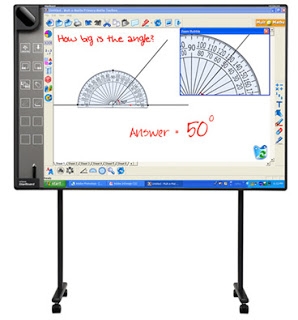Reimagining the taxonomy of computing
Interactive whiteboards! Ambient intelligence! A lot can change in 14 years! That’s the conclusion you have to reach after reading the latest iteration of the Computing Classification System, maintained and published by the Association for Computing Machinery.
The ACM’s CCS has defined the computing field since 1964, and was last updated in 1998. This latest update, completed in March 2012 but unveiled this month, can be considered a full list of terms. According to the ACM,
The 2012 ACM Computing Classification System has been developed as a poly-hierarchical ontology that can be utilized in semantic web applications… It relies on a semantic vocabulary as the single source of categories and concepts that reflect the state of the art of the computing discipline and is receptive to structural change as it evolves in the future.
You can see the entire CCS as a Word document, HTML page or as an XML file.
What’s new in the 2012 classification? Lots, both in terms of organization and in content.
Previously, the CCS was divided into 11 top-level hierarchies: General literature, Hardware, Computer systems organization, Software, Data, Theory of computing, Mathematics of computing, Information systems, Computing methodologies, Computer applications, Computing milieux (my favorite), and Computers and society.
The new 2012 system has 14 top-level hierarchies which better reflect today’s world: General and reference, Hardware, Computer systems organization, Networks, Software and its engineering, Theory of computation, Mathematics of computing, Information systems, Security and privacy, Human-centered computing, Computing methodologies, Applied computing, Social and professional topics, and Proper nouns: People, technologies and companies.
Alas, Computing milieux has been renamed into the clearer, but less romantic, Social and professional topics.
Here’s an entire section that didn’t exist before:
Ubiquitous and mobile computing
.Ubiquitous and mobile computing theory, concepts and paradigms
..Ubiquitous computing
..Mobile computing
..Ambient intelligence
.Ubiquitous and mobile computing systems and tools
.Ubiquitous and mobile devices
..Smartphones
..Interactive whiteboards
..Mobile phones
..Mobile devices
..Portable media players
..Personal digital assistants
..Handheld game consoles
..E-book readers
..Tablet computers
.Ubiquitous and mobile computing design and evaluation methods
.Empirical studies in ubiquitous and mobile computing
Think of the CCS taxonomy as a giant table of contents or index for our industry. When you look through 2012 CCS, you can see just how big computing is – and how fast it is changing.


